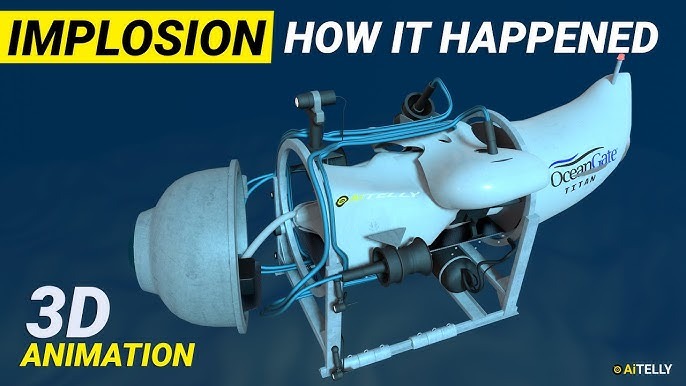Introduction
Implosions are often confused with explosions, but they are two very distinct processes. While explosions result from rapid outward force, how do implosions happen occur when a structure or object collapses inward due to internal pressure or external forces overwhelming its integrity. In this article, we will explore how implosions happen, the science behind them, and how they differ from explosions. By understanding the mechanics of implosions, we can appreciate their role in various fields, from controlled demolitions to natural disasters.
The Science Behind Implosions
An how do implosions happen is the opposite of an explosion. While an explosion causes an outward burst of energy, an implosion causes an inward collapse. To understand how implosions happen, it’s important to grasp the basic principles of pressure and structural integrity. When an object or structure is subjected to a sudden increase in internal pressure or a rapid decrease in external pressure, the structure may lose its stability and collapse inward. This inward collapse is an implosion.
The most common form of implosion happens when a vacuum is created inside a structure. For example, in controlled demolitions, engineers use explosives placed strategically inside a building to weaken its structure. These explosives are designed to cause a rapid inward collapse, ensuring that the building falls on itself rather than outward, minimizing the damage to surrounding structures. The combination of forces at play—internal pressure, structural weakness, and the precise timing of explosives—results in a perfect implosion.
Implosions can also occur naturally, such as in the case of submarines. When a submarine descends to great depths, the external water pressure increases dramatically. If the pressure is not properly managed or if the submarine’s hull is compromised, the external pressure can crush the vessel inward, causing a catastrophic implosion. Similarly, certain geological events, such as the collapse of caves or underground mines, can also result in natural implosions as the structural integrity of the surrounding rock is breached.
Types of Implosions
how do implosions happen can be classified into two main types: natural and man-made. Each type occurs for different reasons but follows the same basic principle of inward collapse.
- Natural Implosions: Natural implosions occur in nature when the external pressure exceeds the strength of an object. For instance, a cave may implode when the structural integrity of the rock above it is compromised due to erosion, flooding, or other factors. Similarly, submarines, as mentioned earlier, may implode under the extreme pressures of deep-sea environments. These natural implosions happen without human intervention, often with catastrophic results.
- Man-Made Implosions: Man-made implosions are engineered events, typically carried out during controlled demolitions. These implosions are planned and executed carefully to bring down a building or structure in a way that is safe for the surrounding environment. Engineers use explosives to weaken the structure at key points, allowing it to collapse in a controlled manner. This type of implosion is common in urban development, where old buildings must be cleared to make way for new construction projects.
How Engineers Control Implosions in Demolitions?
Controlled demolitions are one of the most common instances where implosions are deliberately triggered. Engineers employ precise planning and calculations to ensure the how do implosions happen safely and efficiently. The process involves several key steps:
- Preparation: Before any explosive materials are placed, engineers thoroughly assess the structure to understand how it was built and identify the best points for placing explosives. They consider factors such as the building’s height, materials, and structural layout.
- Placing Explosives: Explosives are strategically placed at key load-bearing points in the building, such as the foundation, columns, and beams. The goal is to weaken these points enough to cause the building to lose its structural integrity and collapse inward.
- Timing the Explosion: The success of an implosion depends heavily on timing. Engineers use a series of synchronized detonators to ensure that the explosives go off in the correct sequence. Typically, the explosives are set off from the bottom up, ensuring that the collapse begins at the foundation and progresses upward, causing the building to fall in on itself.
- Monitoring and Safety: During the implosion, engineers and safety teams monitor the event from a safe distance. The area around the building is evacuated, and special precautions are taken to ensure that the debris doesn’t affect nearby structures. The implosion should be completed in a matter of seconds to minimize any risks to people and property in the surrounding area.
Common Causes of Implosions in Nature
While man-made implosions are controlled, natural how do implosions happen occur when external forces overpower an object or structure. These events can be caused by various factors, including:
- Water Pressure: As mentioned earlier, submarines can implode if they descend to depths where the water pressure becomes too great for the vessel to withstand. The pressure from the water increases as the submarine goes deeper, and if the submarine’s hull is not designed to withstand this pressure, it can collapse inward, causing a catastrophic implosion.
- Geological Events: Implosions can also occur in nature due to geological events. For example, underground mines or caves can collapse when the surrounding rock or soil shifts. This can happen due to factors like erosion, water infiltration, or seismic activity. The collapse of the rock or soil can create a vacuum effect, leading to an implosion.
- Volcanic Activity: In some rare cases, volcanic eruptions can result in implosions. This can happen when magma or gases build up inside a volcano, causing the pressure to increase to a point where the surrounding rock is unable to contain it. The release of this pressure can lead to an implosion, creating a massive crater or opening.
Conclusion
how do implosions happen are fascinating phenomena that result from a combination of pressure, structural integrity, and external forces. Whether they occur naturally, like in submarines or caves, or are engineered for controlled demolitions, the principle behind an implosion remains the same: a sudden inward collapse triggered by overwhelming forces. Engineers have mastered the art of controlled implosions, ensuring that buildings are brought down safely and efficiently, without causing damage to surrounding areas.
Understanding how how do implosions happen not only sheds light on the physics behind these events but also helps us appreciate the safety measures taken during controlled demolitions and the potential dangers of natural implosions in certain environments. In both cases, managing pressure and maintaining structural integrity are crucial to preventing catastrophic results.
FAQs
What is the difference between an explosion and an implosion?
An explosion is an outward burst of energy, while an implosion is an inward collapse. Explosions cause damage by pushing outward, while implosions collapse structures inward.
Can an implosion be controlled?
Yes, controlled implosions are carefully planned and executed by engineers. They use explosives placed in strategic locations to bring down a building or structure safely.
Are implosions dangerous?
Implosions can be dangerous if not controlled. However, controlled demolitions are planned with safety measures in place to minimize risk to people and property.
Can implosions occur naturally?
Yes, natural implosions can occur in caves, mines, and submarines, typically caused by external pressure or structural failure.
Also Read This: How Do Implosions Happen? Understanding the Phenomenon


